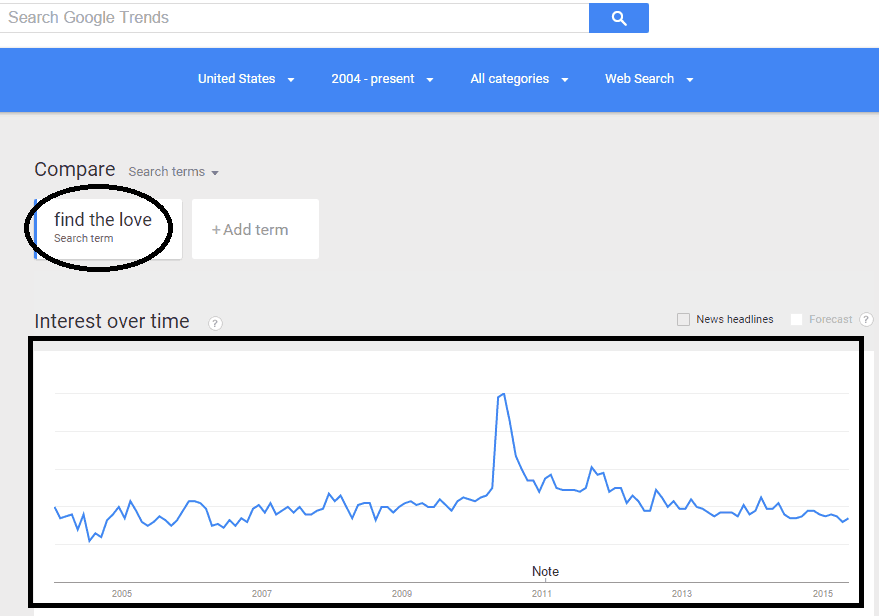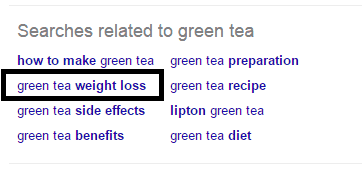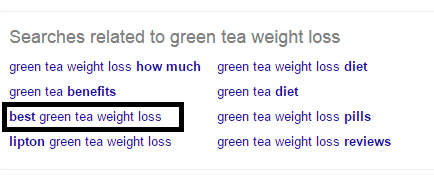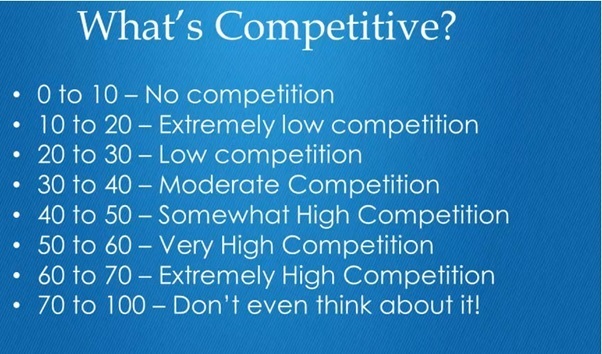How to Get Profitable Keywords with LongTailPRO 3.0 – A 3300 Words Guide
Are you aware that the majority of people fail when creating niche websites, no matter how many efforts they put into it?
What if I told you that your success is mainly influenced by just one relatively simple first step?
I recently started a niche site which ranked in the top 10 search engines results for the main keywords in less than 3 months and making already sales via Amazon affiliate program (I’m going to write a case study soon, so you can reproduce exactly what I did).
This was possible with a proper link building (which I’m also going to share in the niche site case study), but first thanks to a correct keyword research.
In this post I’m going to explain into details how to use LongTailPRO, version 3.0 (which is currently in beta testing, and will be available to public in a few weeks. Be aware that those who buy now will automatically be upgraded to the latest version at no cost) to discover profitable keywords and let you build niche websites that make you earn a passive income online.
But before going into the explanation of LongTailPRO, let me give you some tips to consider when looking for profitable keywords.
These are very important points and understand them correctly can make the difference between building a successful niche website or having one of the millions of sites on the internet that do not generate a dollar, despite the big work you put into it.
What You Need to Know When Looking for Profitable Keywords
1. Search Volume
This is the first important factor you need to consider: a good number is from 1000 to 5000 monthly searches.
But there are other parameters you need to look at.
Broad Match vs Exact Match. Choose the easy way, and select the exact match. You get more accurate results, as the exact match volume, which is exactly the number of searches per month for a specific keyword. This can give you a rough idea of how much traffic you can get when ranking well for your chosen keywords.
2. Cost per Click (CPC)
This factor is quite important if you are going to monetize your site also with Google Adsense (which I do).
I have set the CPC search at $0,50. This can give you an idea of how much you can get paid per click on the ads you place on your site (around 60{6fac3e6a3582a964f494389deded51e5db8d7156c3a7415ff659d1ae7a1be33e} of that value).
In a few words, if you find a keyword with high CPC, then your traffic will be very lucrative and you can earn good money with it.
3. Global vs Local Search
This is an important value you need to pay attention to, as you don’t want to make the big mistakes many people do.
Global search volume indicates the world-wide search volume while local search volume represents how many searches there are in the country your keyword research tool is set.
Normally, you want to aim to U.S. traffic. You can get for example a lot of global searches, but little local search volume. Think that English is set as main internet language in many countries, but they don’t have the purchasing power of people living in United States of America.
4. Satisfy a Need or Solve a Problem
Once you have considered the “technical” points mentioned before, you need to find the topic among the keywords you have found which actually solve people problems or satisfy their needs.
Just ask yourself: Would you run that query on Google?
Check the following examples.
“Funny cat pictures”: 49,500 local (U.S.) monthly searches (click the image to enlarge)
Or
“How to cure heartburn”: 2,400 local (U.S.) monthly searches (click to enlarge the image)
Looking at the amount of monthly searches, the first instinctive choice would be “funny cat pictures“, but if you look further into it, you’ll see that the other one, “how to cure heartburn”, with much less local monthly searches, will be much more profitable.
Ask yourself:
Would you pay $10 for a series of funny cat pictures? (Most of you would say no!)
Would you pay $100 (or much more) to cure your heartburn? Yes, of course!
Now you understand the importance of focusing on a keyword related to solving internet users problems, which is by far more important than thinking just about the search volume.
5. Buyer Keywords
Buyer keywords are the ones which include some words that clearly indicate the interest and willing to buy the thing users are searching.
The concept is simple.
If someone type in Google “buy cheap laptop”, means he’s looking to find the best deal in order to make the purchase. If you target this type of keyword you probably make more money.
6. Seasonality
If you work on keywords like “Christmas gifts” you won’t see many searches during summer time.
These seasonal keywords are based on specific events during and will not have a constant search volume during the year.
So be sure to use Google Trends to check how much will last the searches during the time period of one year and make your decision based on this finding.
See how the keywords “find the love” are pretty much popular over the past years in U.S. searches:
While the “Christmas gifts” query see an unstable trend, with peaks of course, during Christmas time and no searches during spring, or summer:
So now you know what are the factors to consider when choosing a profitable keyword.
So let’s see how to find profitable keywords with LongTailPRO.
Introducing LongTailPRO, 3.0 Version
LongTailPro is a powerful keyword research software that allows you to generate tens of hundreds of unique and profitable long-tail keywords within just a few minutes of work.
As already stated, I learned to master this tool during beginning of this year, and used to find great keywords to start my first niche site, monetized with Amazon affiliate program (I’m slowly adding Google Adsense too).
So if you are looking for a additional passive income to add to your online activities, then you should think about LongTailPRO and how to use it, to get golden keywords and build awesome websites that make money in autopilot.
I’m sure you’ve heard about this software; it’s developed by Spencer Haws, who has wide experience in building niche websites that make money.
This tool was created to help beginners find an easy way to get profitable keywords.
If you are an internet marketer, then you know the importance of keywords and ranking in search engines, to get organic traffic, which is the one that most convert.
Seeing the saturation of one/two words keywords, many people are going for a long tail one, which contain 3 or more search terms. They are more specific, but less common. These keywords are more focused on a niche.
Be sure to consider that this kind search is very likely to convert that phrase into a sale. It also helps the user to make a precise buying decision.
You’ll see that the probabilities of searchers using long-tail keywords to look for a specific product or service are very high, so the chances of converting the visitors landed on your site after using that query in Google (or any other search engines) are high too.
They are more likely to buy from the links on your site if they find the exact information they are looing for.
In other words, long-tail keywords have the power to catch the targeted buyers in the conversion cycle.
And remember, long-tail keywords are much easier to be ranked in search engine as compared to common keywords (the ones with one or two words).
I can make an example.
Let’s hypothesize you are interested in the “tea” market, but, of course, this is already saturated just for the word “tea”. So let’s dig a little more and find “green tea”. Now, simply looking for search related to this keyword on Google:
Will make you find several long-tail keywords, like “green tea weight loss”.
Digging even more:
will make you find “best green tea weight loss”.
Now, back in time you’d have to spend many hours looking for keyword opportunities, may be using free tools like Google Adwords Keyword Planner, or SEO Quake.
With LongTailPRO you can automate that process and get profitable keywords in a couple of minutes.
What Are the Main Benefits of LongTailPRO?
- You can enter many seed keywords at once and receive results for all the long-tail keywords at the same time. Therefore, you can save a lot of time.
- You many want to generate results in relation to on your chosen CPC, search volume and other settings, like advertiser competition, number of words, domain availability, Google or Bind title competition. This way you can find a lot quicker what you need.
- When you find a golden long-tail keyword, you can increase the organic traffic to your website dramatically, by focusing the content on that keyword, with chances of ranking high in SERPs.
- There is a great support behind LongTailPRO, with demo videos, FAQ and ticket system.
- After you become a LongTailPro user, you can benefit from the knowledge and discussion with its community.
- and discuss anything with others.
- You may want to check keywords competition using different metrics, helping you ensure success.
- Check the keyword rankings of your site with the tool included, on Google, Yahoo and Bing.
Before going into details, steps and screenshots on how to generate golden keywords with LongTailPRO, you should be aware that in order to get the most out of this tool, you need to go for the platinum version.
While the “Free 10-days trial” and “Pro” plans offer you the following features:
- Search Multiple Keywords at Once
- Generate up to 800 results per seed keyword
- Pre-filter keywords
- Automatically find Domains
- Google or Bing Title Competition
- Competitor Analysis on top 10 Google Results
- Check Rankings of sites in Google, Yahoo, and Bing
But it’s just with the “Platinum” version, you can get:
- Calculate Keyword Competitiveness (which is awesome)
- Save Favorite keywords
- Import lists of keywords (up to 10,000 at once)
- Create custom calculations from keyword results
- 30 Days Free Platinum Features with Purchase
Once you have chosen your plan and installed the software on your computer, be sure to have both accounts at Google Adwords Keyword Planner and at Moz.
Get Your Account at Google Keyword Planner
In order to start the research of the keywords, LongTailPRO asks you to login to your Google Adwords Keyword Planner Tool.
If you don’t have one, you can simply register here: https://adwords.google.com/KeywordPlanner.
Get Your Moz API
If you have a platinum version of LongTailPRO, you can get Keywords Competetiveness (which is great to understand at first glance if you will be able to beat competition or not).
Just follow the link inside the LongTailPRO and add your SEO Moz API key:
Get your account at Moz here: http://moz.com
Some Important Metrics to Consider When Choosing Your Keywords
These are the recommended metrics for choosing a profitable keyword with LongTailPRO:
- Keyword with Keyword Competitiveness score of 30 or less
- Keywords with at least 0.05 CPC (I like 0,50)
- US local search from 1000 to 5000 (setting U.S. as local market)
How to Use LongTailPRO, 3.0 Version
Let’s see, step by step, how you can generate profitable keywords using LongTailPRO, 3.0 version.
Step #1. Find Seed Keywords
As mentioned before, one of the great features of this tool is to be able to generate results from one or more seed keywords at once.
But where to find these seed keywords?
I suggest you to start from your interests. Make a list. Something you are expert in, or passionate of.
Remember that, unless you hire a professional writing service, you need to be able to write at least 10, or better, 15 articles of high quality content for your niche site, plus 1500-2000 words for the main page.
There are many places where you can start, like Google Trends, Amazon Top Sellers, Reddit, Yahoo Answers or Quora.
Lately, I discovered a nice resource you can use to generate seed keywords ideas: http://www.soovle.com
Just enter your interest and get awesome results (click to enlarge the image):
See how many seed keywords ideas?
Just choose one (or more than one) and add it to LongTailPRO.
Step #2. Finding Potential Keywords
After you enter the name of your project, let’s say “Amazon Niche Site Project”, I choose 3 seed keywords and added to LongTailPRO: “knife”, “survival knife” and “knife sharpener”.
And clicked directly “Generate Keywords & Fetch Data”.
See the following screenshot (you may want to click on it to enlarge):

I’ve left as default the other settings, but you can add your preferences, following the “customize data & pre-filter option”, as:
- Local Search Volume (min or max)
- Suggested Bid (min or max)
- Advertiser Competition (low, med or high)
- Number of words
- Global Search Volume
- Domain Availability
- Bing Title Competition
- Google Title Competition
See a screenshot showing these pre-filters:
After you click on “Generate Keywords & Fetch Data”, you just need to wait a few minutes to get the results.
Step #3. Choose Your Profitable Keywords Browsing Through the Results
From those three seed keywords, I got 1070 results in total:
- 347 from “knife”
- 197 from “survival knife”
- 526 from “knife sharpener”
See the screenshot of the results (click to enlarge):
Now you have to “play” a bit to find the golden keywords!
With the new version of LongTailPRO software I’m using (which as mentioned will be available to download in a few weeks), you can click directly on each keyword, to find the top 10 competition sites into details.
In a few clicks, I set:
- min number of words to “3”
- advertiser competition to “low”
- and local searches to display at top the max
I found out in the third line, this long-tail keyword: “how to sharpen a pocket knife”, which has 0,45 CPC, 1900 local searches (U.S. market), low competition and 6 keywords.
See screenshot below (click to enlarge the image):
I’m getting the Platinum version in a few days, so I’ll be able to see keyword competitiveness too (consider finding golden long-tail keywords with a KC score of 30 or less).
Meantime, let’s concentrate on the other metrics and results.
Metrics to Consider When Checking the Top 10 Competition
I like to keep things as easier as possible, so let’s see the most important factors to consider when checking the top competition for your chosen keyword.
As you can see in the screenshot above, you can get at glance Page Authority, Juice Links, Domain Authority, Moz Rank, Page Rank and Site Age of competitors for the selected keyword (plus keywords competitiveness, if you get LongTailPRO).
This feature of LongTailPRO gives you a complete analysis of data about these parameters. It plays an important role in finding long-tail keywords.
Keyword Competitiveness Score
Keyword competitiveness goes in LongTailPRO in a scale from 1 to 100, where 1 suggests that it’s a simple to rank the keyword, while 100 indicates a highly competitive keyword.
You should aim for a long-tail keyword with a low score, to ensure the success of your niche site.
With LongTailPRO Platinum, the keyword competitiveness score is calculated in just a single click, through a software algorithm which consider the metrics of the web pages in the top 10 position in Google.
See the image below to give you an idea on how to choose your keywords depending on its competitiveness:
Page Authority (PA)
Page Authority goes from 0 to 100 points, and it shows you the opportunities to rank the content containing the keyword on the single page.
A high PA means that a specific page is authoritative.
With a simple concept, you can think about a single page with high PA as a great potential to rank well in SERPs.
This metric data comes from SEOmoz.
Juice Links
Juice Links gives you information about how many links are pointing to that certain page (DoFollow links with a specific measure of authority).
This is also a metric given by SEOmoz.
When finding golden keywords, look for top 10 results with web pages referred by low quality of links.
Domain Authority (DA)
Domain Authority goes from 0 to 100. A higher score means the domain is more authoritative.
Like Page Authority, but regarding root domain.
This is another metric calculated by SEO Moz.
Moz Rank
Moz Rank is a link popularity score that shows the value of a specific page over the internet.
This metric is based upon the total number and the quality of other web pages linked to that page.
Higher Moz Rank shows a great quality of incoming links on that webpage.
It goes from 1 to 10, and can be increased working with SEO techniques.
Page Rank (PR)
Despite Google said is not longer used, Page Rank for older domains is still showed and can be used as a parameter for evaluate the importance of a specific page.
It goes from 0 to 10 points.
A good rule when searching for great long-tail keywords via LTP is to make sure that none of the top 5 sites have a page rank of 3+ and at minimum two pages with Page Rank 0 in the top 10.
Site Age
The Site Age simply shows the years passed since domain registration.
You know that Google consider site age as one of the 200 factors to rank a website in SERPs.
Other Important Tips
The following suggestions are not included as a metric in the software, but will help you finding golden keywords!
1. Onpage SEO with Relevant Content
This is quite the most important factor to consider.
Be sure to check if in the title and URL of the page there is the keyword.
Plus, check the meta tags and the relevancy of the site content.
Put yourself in the shoes of who is building a site and ranking for a specific keyword.
What would you do?
Well, working on SEO page, of course, and writing relevant content, which means adding your keyword in the title, description, headline and URL.
Now, if you find a web page in the top 10 results, which are NOT doing this, well, there you go, you have one less competitor.
Check the Kind of Pages in the Top 10 Competition
This is quite simple, but important at the same time.
If you are lucky, you can get keywords, with the top 10 pages with no SEO.
This about this, for user generated sites. And it happens many times.
If some of the following sites are showing up, then it means you can easily outrank them:
- Yahoo Answers or other Q&A sites
- Facebook or Twitter profiles
- Article directories (ArticleTrader, EzineArticles, etc.)
- Forums
- Web 2.o sites (Blogspot domain, WordPress.com, Weebly, etc.)
Exact Match Domain Available
If you are going to create a niche site, consider that people prefer purchasing exact match domain (no, you won’t get penalized by EMD, simply you’ll get fewer benefits that before this Google update).
Trick: if you find that the exact match domain is available, then with high probabilities no one is working on that keyword, which means no competition.
Conclusion
If you want to include an additional income to your online activities, building niche websites that make money in autopilot or your simply need to get more targeted organic traffic to your blog, by optimizing your content for long-tail keywords, I strongly suggest to get LongTailPRO today.
As you have read in this review, it’s possible to understand how this tool works, to get the most out of it and finally crack some SEO secrets.
SOURCE: NoPassiveIncome – Read entire story here.













